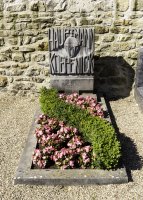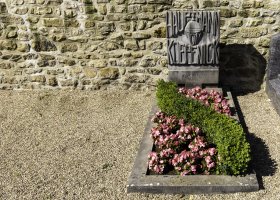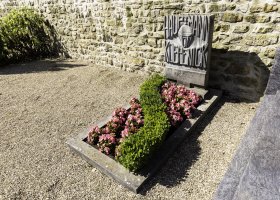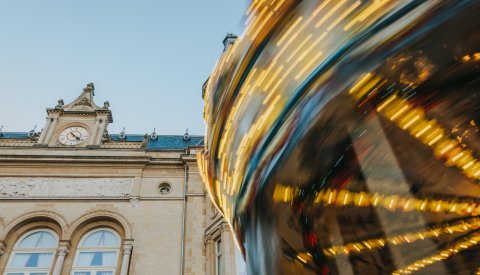Description
Friedrich Wilhelm Voigt was born on 13 February 1849 in Tilsit, East Prussia. Like his father, he was a shoemaker by trade, but he is remembered today for staging an impersonation in 1906 that was so spectacular that after his death, it inspired Carl Zuckmayer's 1930 play, "Der Hauptmann von Köpenick", as well as four films between 1906 and 1956. In addition, between 1960 and 2001, he was the subject of three new dramatic portrayals that aired on television. His tomb, which the City of Luxembourg erected in Notre-Dame cemetery, is the most internationally known grave there. Groups of visitors frequently place coins on it to honour the deceased.
In reality, Voigt was convicted several times in the 1860s and 1890s for various crimes, including theft, fraud, false statements and lies. The impersonation that cemented his international notoriety occurred on 16 October 1906. In Berlin, Voigt disguised himself as an army captain, and accompanied by soldiers specially recruited for this purpose, he had the mayor of Köpenick arrested and managed to obtain the city's funds, which amounted to 4,000 marks. He asked the soldiers to keep watch for an hour, while he absconded with the money, put on his civilian clothing and disappeared.

He was arrested on 26 October 1906, and on 1 December was sentenced to four years in prison. Public opinion of him was positive, and he was granted an amnesty by Emperor William II in August 1908.
During his lifetime, with help from the press, Wilhelm Voigt became famous as the "Captain of Köpenick" by playing himself in variety shows in Canada and the United States. In 1909, he published his memoirs, "Wie ich Hauptmann von Köpenick wurde", which were most recently reprinted in 2016.
After an appearance at Villa Louvigny on 4 May 1909, Voigt decided to settle in Luxembourg City and submitted an application to this effect on 22 May 1909. He subsequently took up residence at 5, Rue Neipperg in the Gare district of Luxembourg, working there as a shoemaker. Until 1918, he participated in a few shows put on by the Ringling Bros. and Barnum & Bailey Circus, and then retired in Luxembourg City to live off his wealth. In 1920 he purchased an automobile. He lived with his partner, "Madame Köpenick", on Boulevard de la Pétrusse. He died from complications of the flu on 3 January 1922. Due to his last place of residence, Voigt was buried in Notre-Dame Cemetery. His partner had purchased a burial plot with a fixed-term concession. The modest grave bore a metal plaque reading "Selig sind die Menschen die Heimweh haben, denn sie sollen nach Hause kommen". In 1961, while passing through Luxembourg City, the Sarrasani Circus extended the concession for a further 15 years. The grave bore the inscription "Wilhelm Voigt, gennant Hauptmann von Köpenick, 1850-1922, gewidmet vom Circus Sarrasani, September 1963". As the concession was for 15 years, the monument was supposed to be removed in 1975. However, at that point, Georges Hausemer, director of the National Tourist Office, rallied the Berlin press to demand that the concession be continued and the monument retained. Aware of Voigt's popularity, the City of Luxembourg organised a competition to design a new monument. Artist Jean-Pierre Georg created the monument, which shows a Prussian helmet and the inscription "Hauptmann von Köpenick". A wax figure of Wilhelm Voigt stands in Madame Tussauds museum in London.


















